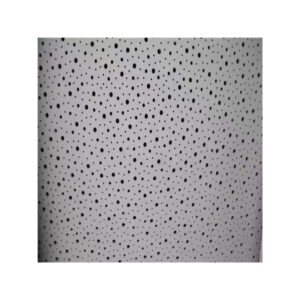Introduction
Acoustic ceilings are widely recognized for their ability to enhance sound control in buildings. However, besides their acoustic properties, it is important to understand whether acoustic ceilings also contribute to energy efficiency and thermal insulation. In this article, we will explore the potential impact of acoustic ceilings on energy efficiency and thermal insulation, shedding light on their additional benefits for building owners and occupants.
Energy Efficiency
Acoustic ceilings can positively impact energy efficiency in the following ways:
a. Lighting Efficiency: Acoustic ceilings often feature a reflective surface that helps distribute light more effectively within a space. This can reduce the need for additional lighting fixtures or higher wattage bulbs, resulting in energy savings. Additionally, acoustic ceiling systems can incorporate integrated lighting solutions that are energy-efficient, such as LED panels or fixtures.
b. HVAC Efficiency: Acoustic ceilings can contribute to improved HVAC (Heating, Ventilation, and Air Conditioning) efficiency. By reducing sound reverberation, these ceilings minimize the strain on HVAC systems, allowing them to operate more efficiently. Furthermore, acoustic ceiling systems can be designed with perforations or micro-openings that facilitate air circulation and improve air quality.
c. Insulation of Unconditioned Spaces: In some cases, acoustic ceilings can be installed in areas where the space above is unconditioned, such as attics or interstitial floors. These ceilings act as a barrier, helping to prevent heat transfer between conditioned and unconditioned spaces. This insulation effect can contribute to overall energy efficiency by reducing thermal losses or gains.
Thermal Insulation
While acoustic ceilings primarily focus on sound control, they can also provide a certain level of thermal insulation:
a. Reduction of Heat Loss or Gain: Acoustic ceilings, especially those with additional insulating properties, can help reduce heat loss during colder months and minimize heat gain during hotter months. The ceiling acts as an additional layer of insulation, slowing down the transfer of heat through the building envelope.
b. Comfort and Energy Savings: By improving thermal insulation, acoustic ceilings create a more comfortable indoor environment. This can lead to reduced reliance on heating and cooling systems, resulting in energy savings and lower utility bills.
c. Climate Zone Considerations: The thermal insulation effectiveness of acoustic ceilings may vary depending on the specific climate zone. It is important to select acoustic ceiling materials with appropriate insulation properties suitable for the local climate conditions.
Conclusion
Acoustic ceilings offer more than just sound control benefits. They can also have a positive impact on energy efficiency and thermal insulation in buildings. Acoustic ceilings contribute to lighting efficiency, HVAC efficiency, insulation of unconditioned spaces, and thermal insulation by reducing heat loss or gain. These additional benefits can enhance occupant comfort, reduce energy consumption, and support sustainable building practices. When considering acoustic ceiling options, it is crucial to consult with professionals and select products that meet the desired acoustic, energy efficiency, and thermal insulation requirements for the specific project.



